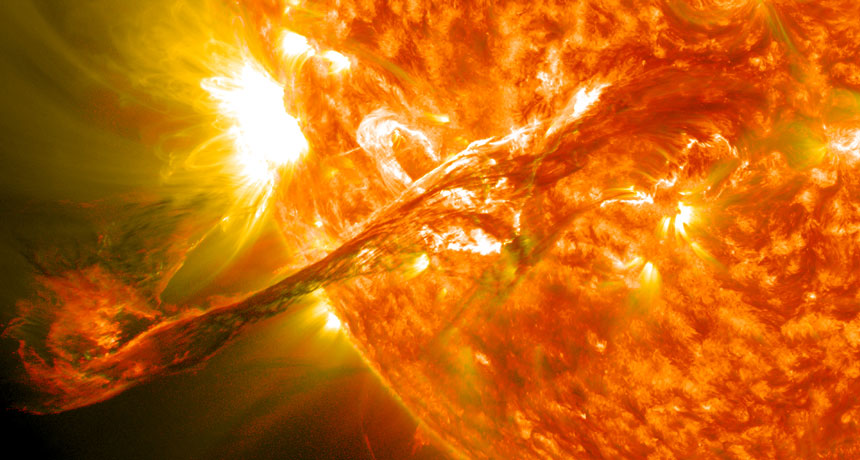Merging magnetic blobs fuel the sun’s huge plasma eruptions
Before coronal mass ejections, plasma shoots up, breaks apart and then comes together again

BURSTING WITH PLASMA Solar scientists have long wondered what drives big bursts of plasma called coronal mass ejections. New analysis of an old eruption suggests the driving force might be merging magnetic blobs.
SDO/GSFC/NASA